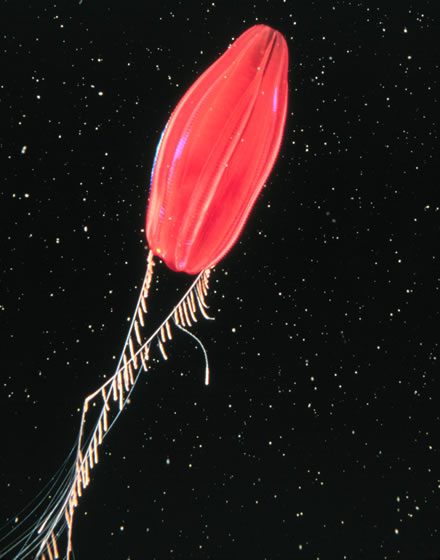|
Antipathozoanthus Hickmani
''Antipathozoanthus hickmani'' is a species of macrocnemic zoanthid Zoanthids ( order Zoantharia also called Zoanthidea or Zoanthiniaria) are an order of cnidarians commonly found in coral reefs, the deep sea and many other marine environments around the world. These animals come in a variety of different coloniz ... first found in the Galapagos. It can be distinguished by its exclusive association with '' Antipathes galapagensis'', and having about 40 tentacles. References Further reading *Swain, Timothy D., and Laura M. Swain. "Molecular parataxonomy as taxon description: examples from recently named Zoanthidea (Cnidaria: Anthozoa) with revision based on serial histology of microanatomy." Zootaxa 3796.1 (2014): 81-107. *Bo, Marzia, et al. "Black coral assemblages from Machalilla National Park (Ecuador)." Pacific Science 66.1 (2012): 63-81. Animals described in 2010 Parazoanthidae {{hexacorallia-stub ... [...More Info...] [...Related Items...] OR: [Wikipedia] [Google] [Baidu] |
Species
In biology, a species is the basic unit of Taxonomy (biology), classification and a taxonomic rank of an organism, as well as a unit of biodiversity. A species is often defined as the largest group of organisms in which any two individuals of the appropriate sexes or mating types can reproduction, produce Fertility, fertile offspring, typically by sexual reproduction. Other ways of defining species include their karyotype, DNA sequence, morphology (biology), morphology, behaviour or ecological niche. In addition, paleontologists use the concept of the chronospecies since fossil reproduction cannot be examined. The most recent rigorous estimate for the total number of species of eukaryotes is between 8 and 8.7 million. However, only about 14% of these had been described by 2011. All species (except viruses) are given a binomial nomenclature, two-part name, a "binomial". The first part of a binomial is the genus to which the species belongs. The second part is called the specifi ... [...More Info...] [...Related Items...] OR: [Wikipedia] [Google] [Baidu] |
Zoanthid
Zoanthids ( order Zoantharia also called Zoanthidea or Zoanthiniaria) are an order of cnidarians commonly found in coral reefs, the deep sea and many other marine environments around the world. These animals come in a variety of different colonizing formations and in numerous different colors. They can be found as individual polyps, attached by a fleshy stolon or a mat that can be created from small pieces of sediment, sand and rock. The term "zoanthid" refers to all animals within this order Zoantharia, and should not be confused with "''Zoanthus''", which is one genus within Zoantharia. These are among the most commonly collected corals in reef aquaria, easily propagating and very durable in many water conditions. Nomenclature controversy The name of the order is controversial. Non-specialists often use the term Zoanthidea whereas most taxonomists use Zoantharia. The term Zoantharia in turn is used temporarily instead of Hexacorallia. However, major taxonomic papers published ... [...More Info...] [...Related Items...] OR: [Wikipedia] [Google] [Baidu] |
Antipathes Galapagensis
''Antipathes'' is a genus of coral in the order Antipatharia, composed of black coral (so named for its black skeleton). Distinct features vary greatly within this genus: it contains symmetrically aligned as well as irregularly shaped corals, a range of different colors, and colonies that can be either sparsely branched or closely packed. polyps for these corals have six tentacles that are each lined with stinging cells. Unlike their reef-building cousins, these coral lack photosynthesizing algae and are not restricted to the lighter surface regions. They prefer to live in deeper waters near currents so they can catch and eat passing zooplankton. Species Species included in this genus are: * '' Antipathes aculeata'' (Brook, 1889) * '' Antipathes arborea'' Dana, 1846 * '' Antipathes assimilis'' (Brook, 1889) * ''Antipathes atlantica'' Gray, 1857 * ''Antipathes brooki'' (Whitelegge & Hill, 1899) * ''Antipathes caribbeana'' Opresko, 1996 * ''Antipathes catharinae'' (Pax, 1932) ... [...More Info...] [...Related Items...] OR: [Wikipedia] [Google] [Baidu] |
Tentacle
In zoology, a tentacle is a flexible, mobile, and elongated organ present in some species of animals, most of them invertebrates. In animal anatomy, tentacles usually occur in one or more pairs. Anatomically, the tentacles of animals work mainly like muscular hydrostats. Most forms of tentacles are used for grasping and feeding. Many are sensory organs, variously receptive to touch, vision, or to the smell or taste of particular foods or threats. Examples of such tentacles are the eyestalks of various kinds of snails. Some kinds of tentacles have both sensory and manipulatory functions. A tentacle is similar to a cirrus, but a cirrus is an organ that usually lacks the tentacle's strength, size, flexibility, or sensitivity. A nautilus has cirri, but a squid has tentacles. Invertebrates Molluscs Many molluscs have tentacles of one form or another. The most familiar are those of the pulmonate land snails, which usually have two sets of tentacles on the head: when e ... [...More Info...] [...Related Items...] OR: [Wikipedia] [Google] [Baidu] |
Animals Described In 2010
Animals are multicellular, eukaryotic organisms in the biological kingdom Animalia. With few exceptions, animals consume organic material, breathe oxygen, are able to move, can reproduce sexually, and go through an ontogenetic stage in which their body consists of a hollow sphere of cells, the blastula, during embryonic development. Over 1.5 million living animal species have been described—of which around 1 million are insects—but it has been estimated there are over 7 million animal species in total. Animals range in length from to . They have complex interactions with each other and their environments, forming intricate food webs. The scientific study of animals is known as zoology. Most living animal species are in Bilateria, a clade whose members have a bilaterally symmetric body plan. The Bilateria include the protostomes, containing animals such as nematodes, arthropods, flatworms, annelids and molluscs, and the deuterostomes, containing the echinoderms a ... [...More Info...] [...Related Items...] OR: [Wikipedia] [Google] [Baidu] |




